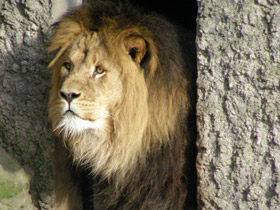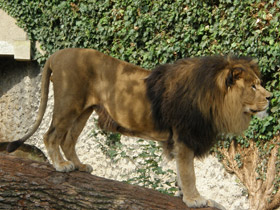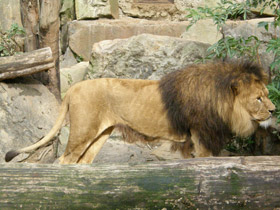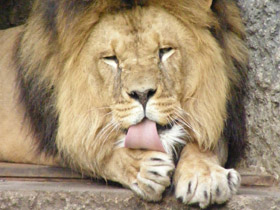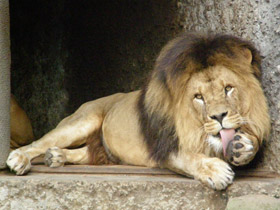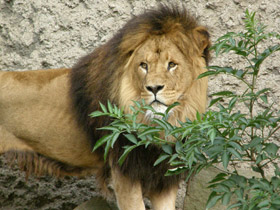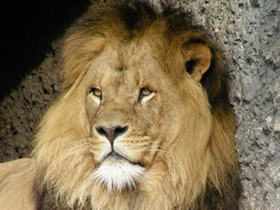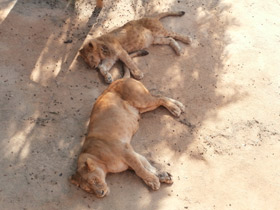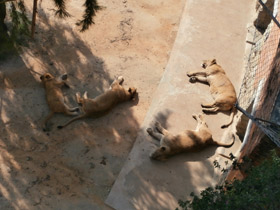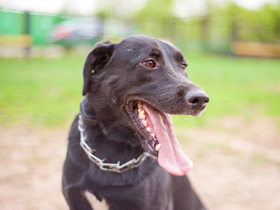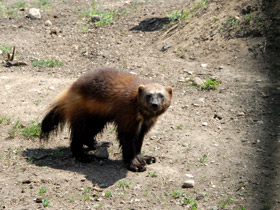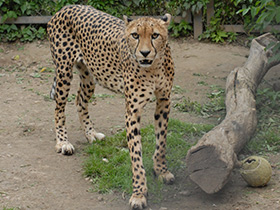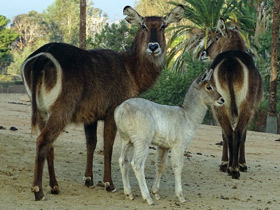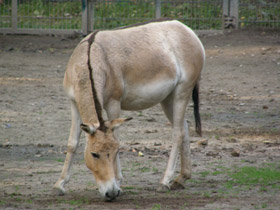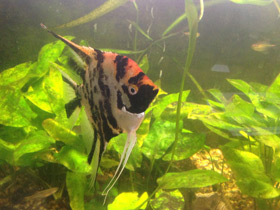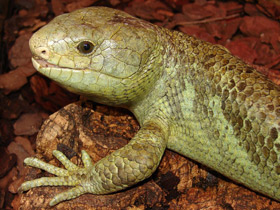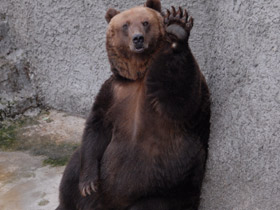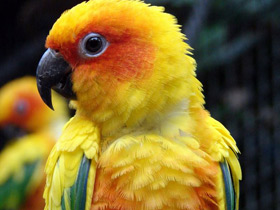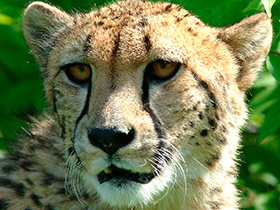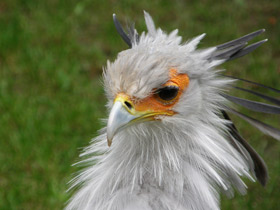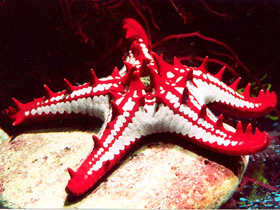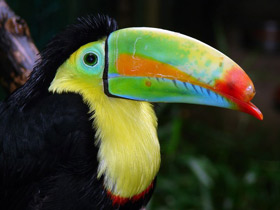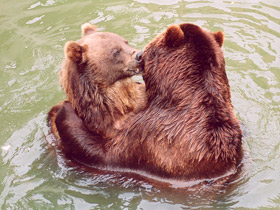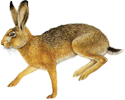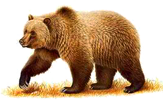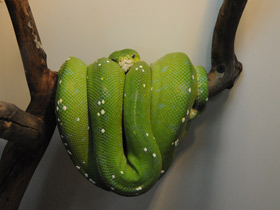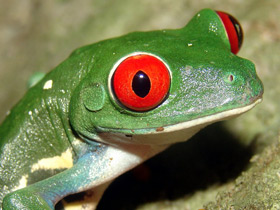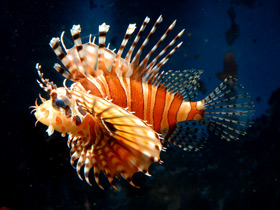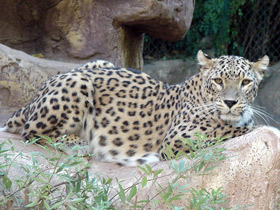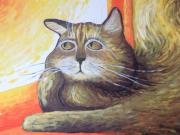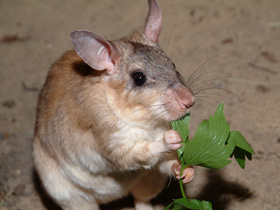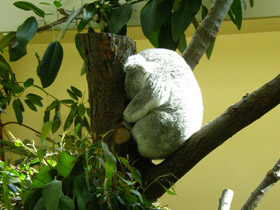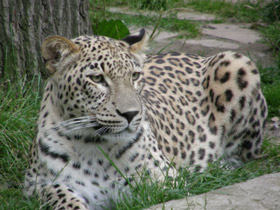African lion Panthera leo nubica
The numbers of the African lions are higher than those of the Asiatic lions. The dramatic decline in lion populations across Africa started in the beginning of XX century, when big game, especially lions and elephants, were massively exterminated in hunting safaris of “white hunters” from Western countries.
The African lions are larger than Asiatic lions; males are 180-240 cm long, not including the tail (60-90 cm), and their weights range between 180 and 227 kg; besides, their manes are more rich and dense. African lions live in prides with a core consisting of several females. The females are usually closely related and have their own home range (daughters inherit home ranges of their mothers). None of the lionesses is dominant and all of them demonstrate cooperative behavior. There could be a few males in the pride (most often they are brothers), in which cases one of the males becomes dominant and other male lions recognize and accept his dominance. The dominant male is the first to get to the prey after successful hunt, he is the first to mate with females, and it is he who attacks an enemy – alien lion male intruding into the pride’s territory. Pride sizes average 13 animals, but groups up to 40 lions have been observed where prey is abundant all year round. The size of the home range of the pride depends on the landscape, prey abundance and number of lions in the pride; it may vary from 20 to 400 km2. Prides exist for a few years. Females hunt and raise cubs together, while males defend their territory by marking it with their urine mixed with secretion from anal glands, and demonstrating their presence by loud roaring that could be heard from the distance of 8 or 9 km. If the intruder is not averted by these demonstrations, the dominant male will have to defend his pride and territory. The fights between equally strong lion males may result in the death of both of them. If an outside male takes over the pride, he kills all little cubs so that the lionesses could give birth to his own offspring.
The gestation lasts from 102 to 110 days. Before the birth, the female leaves the rest of the pride and finds a den in a secluded place, where she gives birth to a litter of two to four blind and helpless cubs. The newborns weigh less than 2 kg and are 30 cm long at birth. Unlike adult animals, lion cubs have spotted fur. They walk around, play near the den and start eating meat at six weeks of age, and when they are ten weeks old, the mother brings them into her pride. Nursing lionesses can nurse other female’s cubs, and orphaned cubs usually survive. The lion fathers are also very tender towards their cubs. By the age of 14 weeks the cubs follow their mother on her hunt but they become capable of killing prey only when they reach the age of one year. Young males normally leave the pride at 3 or 4 years of age, but females may stay for life.









